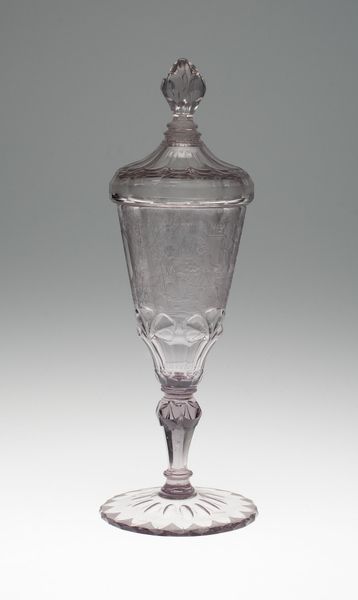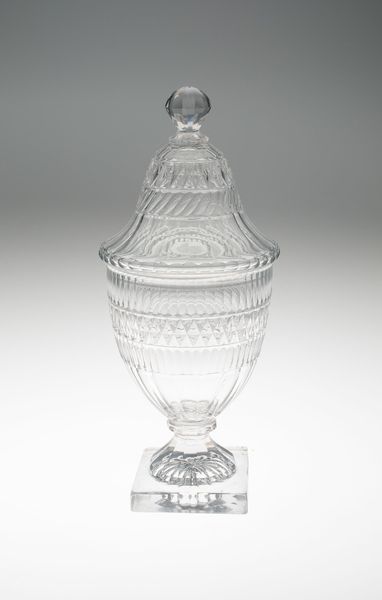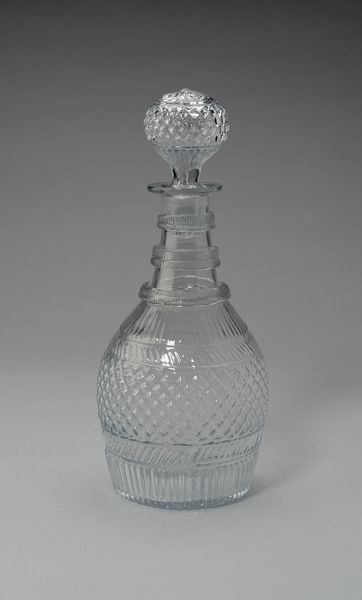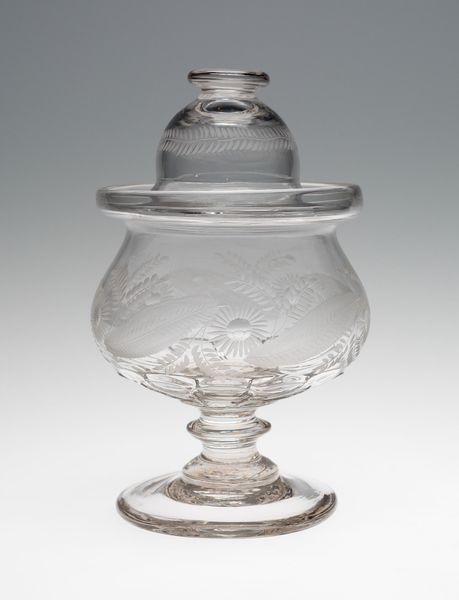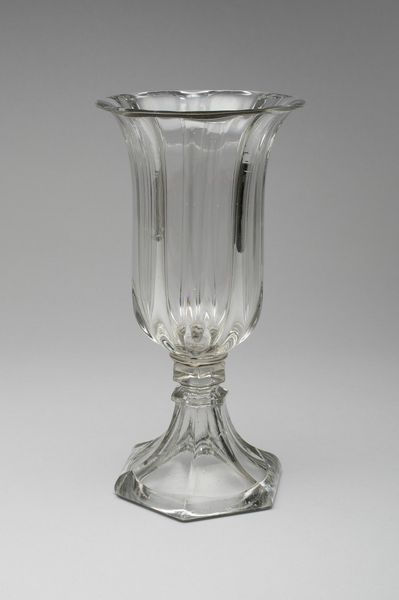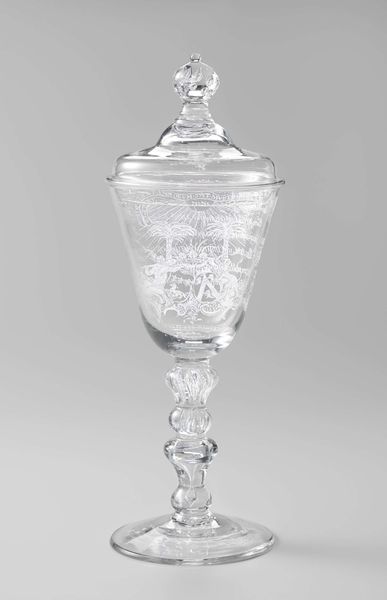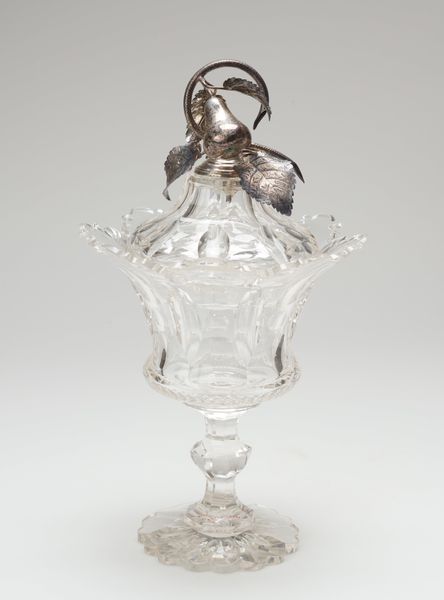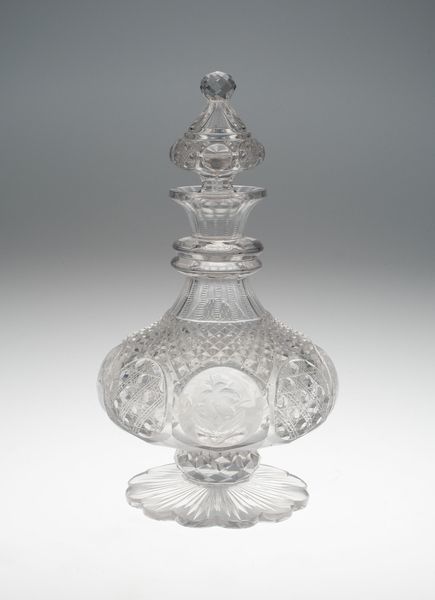
glass
#
baroque
#
glass
Dimensions: 10 1/2 × 4 1/16 × 4 1/16 in. (26.67 × 10.32 × 10.32 cm)
Copyright: Public Domain
This delicate glass goblet and cover was made in the Netherlands by Willem van Heemskerck in the 17th century. Drinking vessels like this one were luxury objects and were highly valued in Dutch society at this time. During the 17th century, the Dutch Republic experienced a period of economic prosperity known as the Golden Age. This period saw a growth in trade, science, and the arts, and a rise in the wealth of the merchant class. Glassmaking, like painting, became a major industry. The goblet therefore reflects the tastes and values of a wealthy, urban elite. The elaborate engravings suggest a culture of display and conspicuous consumption. As historians, we can better understand the meaning and significance of this goblet and cover by studying the social and economic history of the Dutch Golden Age. By examining archival documents and other historical sources, we can gain a deeper understanding of the cultural context in which this object was made and used.
Comments
minneapolisinstituteofart almost 2 years ago
⋮
Glass goblets engraved with short quotations or mottos were a quintessential expression of Dutch art in the 17th century. They added food for thought to the dinner table, sparking conversations about religious, philosophical, and political subjects. The inscription on the bowl of this goblet reads, “Alles heft sijn tyd. Eccles. Cap: 3.vs.I” (“There is a season for everything, Ecclesiastes, chapter 3, verse 1”). On the cover, another inscription reads, “INFESTUS INFESTIS,” a saying that means “Hostile (only) to the wicked,” an ideal of civic and national self-defense.
Join the conversation
Join millions of artists and users on Artera today and experience the ultimate creative platform.

